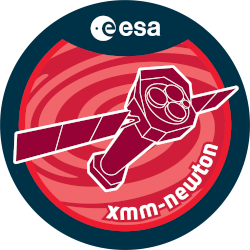

| Proposal ID | 030673 |
| Title | Accreting black hole candidates in nuclear star clusters |
| Download Data Associated to the proposal | https://nxsa.esac.esa.int/nxsa-sl/servlet/data-action-aio?obsno=0306730201 |
| DOI | https://doi.org/10.5270/esa-l3q3t0d |
| Principal Investigator, PI | Dr Roberto Soria |
| Abstract | Nuclear clusters (NCs) in late-type spiral galaxies have more in common withmassive, dense globular clusters (GCs) or super star clusters (SSCs) thanearly-type galactic bulges. They may host stellar- or intermediate-mass blackholes (IMBHs), and if so may also be X-ray bright. We propose an XMM-Newtonsurvey of nearby galaxies with well-studied NCs in order to determine how manyof these NCs have appreciable X-ray emission. These observations will serve as apilot study for a broader program targeting galactic NCs, which will allow us toplace important constraints on the parameter space for models of IMBH formation,and to compare the X-ray properties and remnant population of these threeclasses of star clusters (NCs, GCs, SSCs) as a function of environment, age, star-formation hist. |
| Publications |
|
| Instrument | EMOS1, EMOS2, EPN, OM, RGS1, RGS2 |
| Temporal Coverage | 2005-08-13T06:47:45Z/2005-11-27T17:07:11Z |
| Version | 17.56_20190403_1200 |
| Mission Description | The European Space Agencys (ESA) X-ray Multi-Mirror Mission (XMM-Newton) was launched by an Ariane 504 on December 10th 1999. XMM-Newton is ESAs second cornerstone of the Horizon 2000 Science Programme. It carries 3 high throughput X-ray telescopes with an unprecedented effective area, and an optical monitor, the first flown on a X-ray observatory. The large collecting area and ability to make long uninterrupted exposures provide highly sensitive observations. Since Earths atmosphere blocks out all X-rays, only a telescope in space can detect and study celestial X-ray sources. The XMM-Newton mission is helping scientists to solve a number of cosmic mysteries, ranging from the enigmatic black holes to the origins of the Universe itself. Observing time on XMM-Newton is being made available to the scientific community, applying for observational periods on a competitive basis. |
| Creator Contact | https://www.cosmos.esa.int/web/xmm-newton/xmm-newton-helpdesk |
| Date Published | 2006-12-13T00:00:00Z |
| Last Update | 2025-01-27 |
| Keywords | "imbh formation", "parameter space", "appreciable xray emission", "nuclear cluster ncs", "accreting blackhole candidates", "star cluster ncs", "nearby galaxy", "remnant population", "XMM-Newton", "xray properties", "star formation hist", "xray bright", "type galactic bulges", "XMM", "nuclear star clusters", "xmm newton survey" |
| Publisher And Registrant | European Space Agency |
| Credit Guidelines | European Space Agency, Dr Roberto Soria, 2006, 'Accreting black hole candidates in nuclear star clusters', 17.56_20190403_1200, European Space Agency, https://doi.org/10.5270/esa-l3q3t0d |